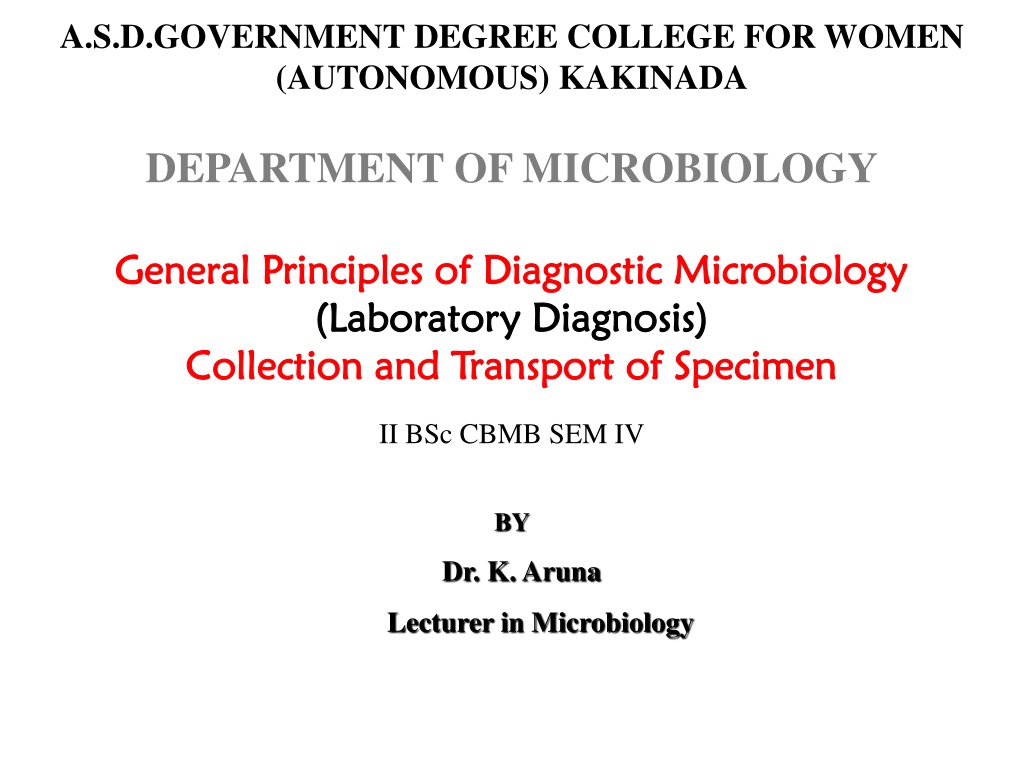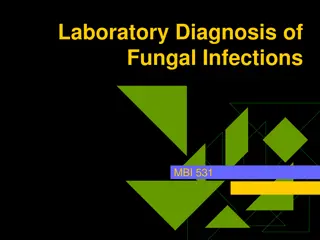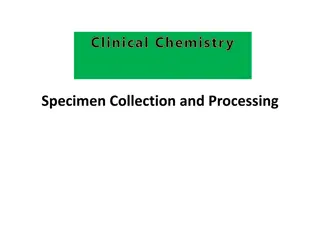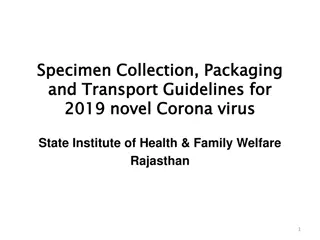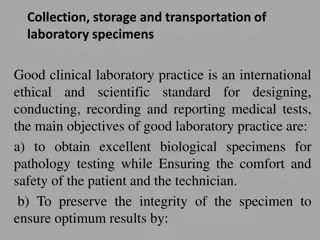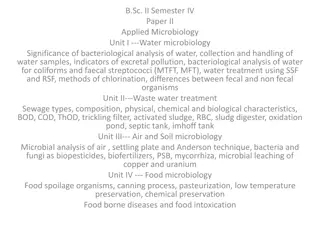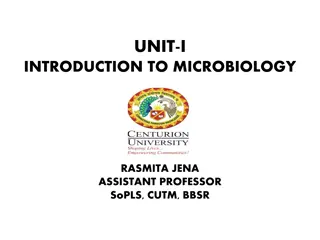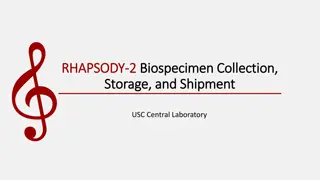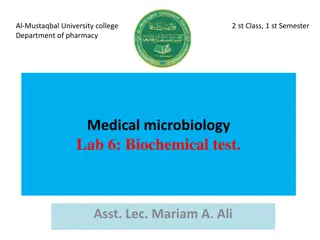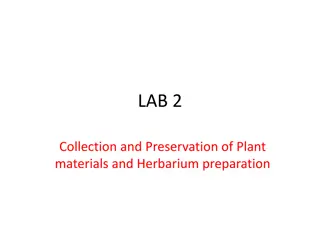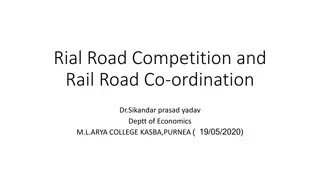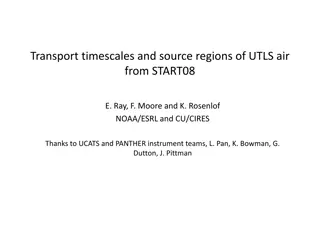Collection and Transport of Specimens in Diagnostic Microbiology
Successful laboratory investigations depend on the proper collection and transport of specimens. This involves selecting adequate samples that represent the diseased area, avoiding contamination, obtaining specimens before administering antimicrobials, ensuring biosafety, proper documentation, and timely communication of results to the clinical laboratory. Common specimens include swabs, CSF, blood, pus, urine, sputum, and stool. Various methods such as swabbing, aspiration, intubation, catheterization, and clean-catch techniques are used to collect samples effectively.
Download Presentation

Please find below an Image/Link to download the presentation.
The content on the website is provided AS IS for your information and personal use only. It may not be sold, licensed, or shared on other websites without obtaining consent from the author. Download presentation by click this link. If you encounter any issues during the download, it is possible that the publisher has removed the file from their server.
E N D
Presentation Transcript
A.S.D.GOVERNMENT DEGREE COLLEGE FOR WOMEN (AUTONOMOUS) KAKINADA DEPARTMENT OF MICROBIOLOGY General Principles of Diagnostic Microbiology General Principles of Diagnostic Microbiology (Laboratory Diagnosis) (Laboratory Diagnosis) Collection and Transport of Specimen Collection and Transport of Specimen II BSc CBMB SEM IV BY Dr. K. Aruna Lecturer in Microbiology
General Principles of Diagnostic Microbiology 1. Collection of Sample 2. Handling of collected Sample 3. Transport 4. General methods for Laboratory Diagnosis
Collection and Transport of Specimen Successful Laboratory Investigations The specimen should selected adequately represents the diseased area additional areas (live and blood stream) Collection of adequate and appropriate specimen Avoid the contamination If possible specimen should obtained before antimicrobial administerd Biosafety and decontamination & Sufficient documentation Correct packing and rapid transport The specimen should be forwarded promptly to the Clinical laboratory Timely communication of Results Common Specimens Swabs (Throat, Nasal, Eye, Ear and Cervical) CSF Blood pus Urine Sputum Stool
Methods Used to Collect the Samples Swab Need Aspiration Intubation Catheter Clean-Catch Method Sputum -Cup Method
Swab Swab is the most common method used to collect specimen from the anterior nares or throat. A sterile swab is a rayon- calcium alginate or Dacron-tipped polysttryene applicator. Many of having transport media to preserve a Varity of microorganisms. Throat swab A plain cotton wool swab should be used to collect as much as exudates as possible from tonsils, posterior pharyngeal wall. Throat swab (Posterior Pharyngeal Swab)
Saliva sample as a swab of throat for Covid-19 laboratory test during Coronavirus epidemic Naso Pharyngeal Swab EarSwab
Needle Aspiration Needle Aspiration is used to collect he specimens aseptically from Cerebrospinal fluid, Pus and Blood. Cerebrospinal fluid
Blood Collection (for culture) Automated blood culture systems are the primary choice for the detection of pathogens from blood specimens. Instead of manually read broth-based conventional methods, laboratories use continuously monitored, automated blood culture systems for the processing of blood culture specimens nowadays. Bactec Culture vials Depending on the type of suspected pathogen, several broth formulas are available, including media for the recovery of aerobic and anaerobic bacteria, mycobacteria, and fungi. No single type is optimal for all microorganisms. Handling and Transport Collect into blood Culture bottles(Broth) Require slip must contain relevant Patient Information Send immediately to laboratory with request slip
Pus-Specimen Collection The ideal specimen is an aspirate from a previously undrained abscess, or a tissue biopsy. Ideally, a minimum volume of 1mL (up to 5 mL) of pus should be collected. The aspirate should be collected in a sterile syringe any air bubbles should be expelled. Needle safely and tightly capped (needles should NOT be sent). A tissue specimen should be placed in a sterile universal bottle (or any sterile leak proof container) , If there will be a delay in transporting, the tissue should be placed in an anaerobic transport system. Specimen Transport: Label the specimen and deliver it to the laboratory as soon as possible with a completed request form. The recovery of anaerobes , sample should be placed in the transport medium (Amines transport media or Cary-Blair transport media ) to minimize drying and minimize exposure to oxygen if anaerobes are suspected.
Clean-Catch Method For Urine Catheter It is a tubular instrument used for withdrawing and introducing fluids from or into the body cavity. Urine specimen may be collected with catheters to detect the urinary tract infection caused by bacteria in newborns. Clean Catch Method It is the most common method to collect used for collection of urine. Optimum time is early morning Midstream portion is collected . For some patients, needle aspiration also are done directly into the urinary bladder.
Intubation Nasogastric intubation can be used to obtain a sample of stomach fluid. The tube is passed through the nose rather than through the mouth.
Sputum Cup Method It is the most common specimen collection in suspected cases of lower respiratory tract infections. Mucus secretion expectorated from the lungs, bronchi, trachia through the mouth & saliva. The patients to expectorate a clinical sample directly into the cup.
Stool Collection of stool Stools samples should be collected in clean leak-proof containers without disinfectant or detergent residue and with tight-fitting, leak-proof lids. Unpreserved stool should be refrigerated, if possible, and processed within a maximum of 2 hours after collection. Specimens that cannot be cultured within 2 hours of collection should be placed in transport medium and refrigerated immediately. Routine culture of fecal specimen should include Salmonella, Shigella,and Campylobacter; specify Vibrio, Aeromonas, Plesiomonas, Yersinia, and Escherichia coli Rejection of fecal Specimens Stool specimens are unacceptable if any of the following conditions apply: The information in the label does not match the information in the requisition The specimen has not been transported in the proper medium The quantity of specimen is insufficient for testing
Transport Media Media appropriate for the transport of fecal specimens Cary-Blair transport medium High pH (8.4) Medium of choice for transport and preservation of V. cholerae Cary-Blair transport medium can be used to transport many bacterial enteric pathogens, including Shigella, Salmonella, and Vibrio cholerae Staurt s transport media Acceptable for Shigella and Salmonella (including ser. Typhi), but they are inferior to Cary-Blair for transport of V. cholerae. Salinite F broth: Salmonella Alkaline peptone water This medium may be used to transport V. cholerae, prevent the acidic contamination. Buffered glycerol saline (BGS) It s a liquid medium which can be used for Shigella but this transport medium is unsuitable for transport of V. cholerae.
Handling of the Collected Samples Immediately after Collection the specimen must be properly labeled and handled.
